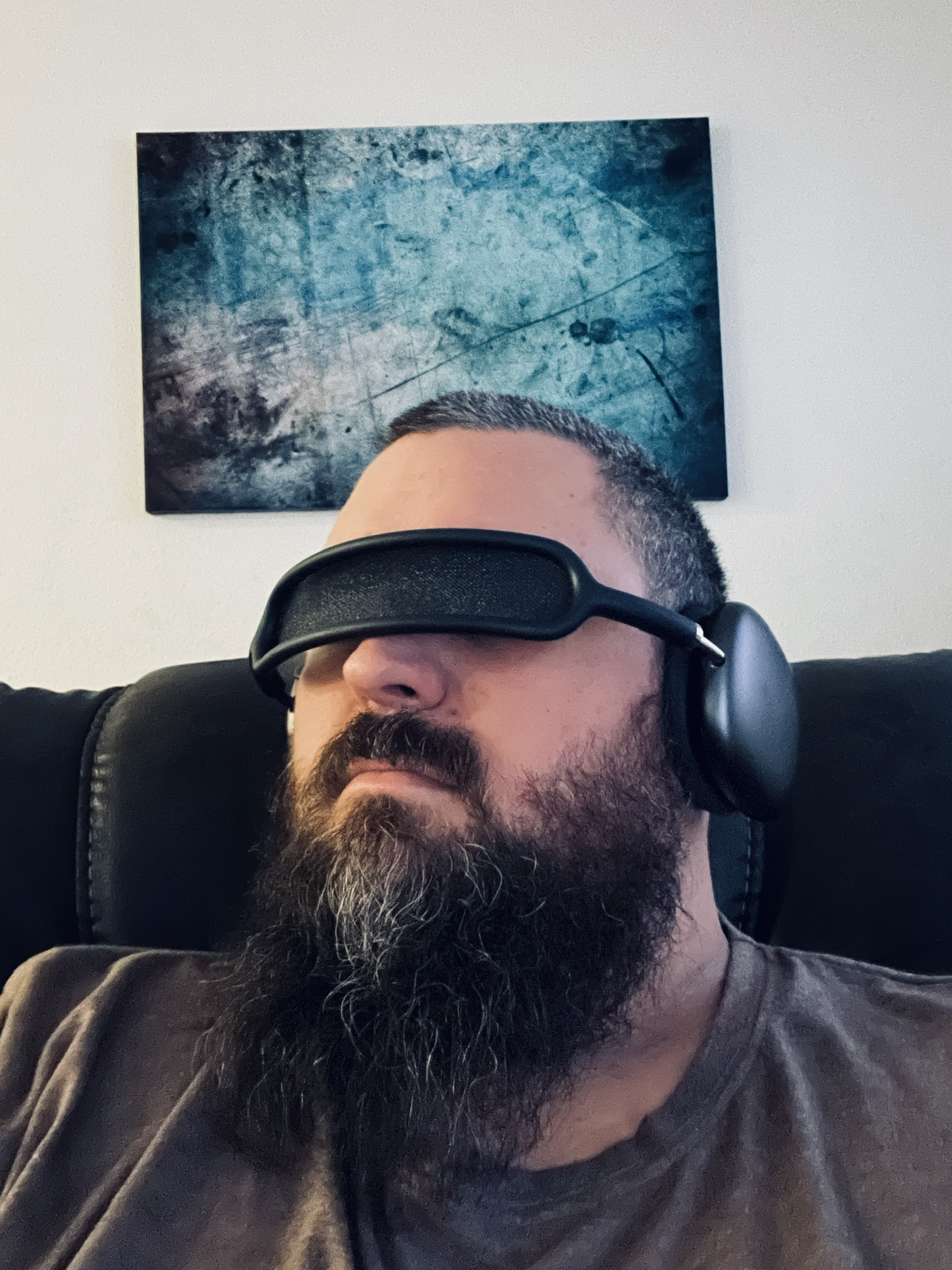Running. I don’t think I ran a consecutive mile until at least age 28, but now i love to run.
why?
i can run like 15 but i fucking hate every second of it. it’s so BORING.
A good playlist and somewhere interesting to explore make it great, but I also just love running. I bring running shoes when I travel: there’s nothing like running through a new city as a tourist.
That last bit gives me a ton of anxiety just thinking about it. Do you map out where you can run before you go to a new place? How do you just like run on the sidewalk if it ends up congested with too many people? Do you only run in nearby parks?
Sorry if these are weird questions! I legitimately want to know!
I always research unsafe areas for tourists when traveling to a new city, so when I run with my phone map I have a general idea of where I should avoid. Otherwise, I just turn down random streets, though populated and well lit ones. As to large crowds, I have only had this issue occasionally: just be ready to walk and don’t be a nuisance to others. If it’s a rural area, I mostly worry about surprise hills, not safety.
If it’s a foreign country I am especially cautious as running is not really a hobby in many places. I wanted to go for a run by myself in Guatemala, but eventually decided that i wouldn’t outside of very touristy areas or very rural areas. I had a great time running alone in downtown Montreal with minimal research. It depends on the country, so pay attention to local cultural norms and dress codes.
The ECS design pattern.
Oh you meant talent? Well I didn’t get my drivers license until I was 19.
Driving stick, still haven’t figured it out and now that I lost sensation in my feet, seems like I’ll never get it.
I understand how it’s supposed to work, I just can’t do it without stalling.
This might sound dumb, but I’m doing this with Euro Truck Simulator. I’ve got the wheel/pedals/shifter, but I can’t for the life of me get it to not stall out, especially when pulling heavy loads from a standstill.
I’ve seen pedals that have haptic feedback for feeling the clutch engage, and I’m honestly considering saving up for it, cause I’m obviously missing something here.
I doubt it will really compare to an actual truck. When your diving one, the pedal is the easy part. The truck has so much torque it is harder to stall, unless you’re loaded heavy and on a hill. The tricky part is getting your shift windows without synchromesh.
I remember when I was learning, it was a bit challenging to hit my shift windows at first, and remember what split I was in when I was on the road. Back then I had a little xB and a FJ40. Both of those were manual. When I got back into one of them, it felt insane that anyone could screw up in one of them.
I had already learned front end loaders, skid loaders, and a skid steer, and was working on a certification for case controls on an excavator, so the coordination complexity of hands and feet were no big deal.
The clutch is all about feeling the difference between the spring pressure and the friction.
Anyways, at least for me it can help to think in perspective like this; about other areas where the same basic skill applies with perhaps even more complexity. Like after a few days on an excavator you stop thinking about the individual controls and start thinking about the bucket like your hand and the boom like your arm and the pivot like your waist. The brain, or at least mine, abstracts away the motions like an extension of your body. It is such a strong connection and the hydraulic feedback is so direct, that you can “feel” with the bucket without actually seeing into the trench. Like if you hit a rock, a root, or even conduit in the ground, you can feel it in the controls like it is a part of you.
The clutch is all about feeling the difference between the spring pressure and the friction.
I think this here is what gets me. With the cheap sim pedals, you can’t feel anything, and have to go entirely by visuals, like watching the tachometer for a sudden spike. By the time you can react, you’re already stalled half the time. I totally agree you need that visceral feedback from the machine to really use it with any degree of finesse.
I’ve driven a fair bit of heavy machinery in my time, and never had an issue working the clutch, but those simulators are a different beast altogether - at least at my price point. Maybe one day I’ll be able to afford some realism, haha.
The key for me was being told: it’s okay to ride (to hold) the clutch a little before/during/after you’re switching gears.
Learning to work the clutch and feel the friction zone is a more difficult skill than some want to admit.
Learning to drive a motorcycle was a bit overwhelming, I remember my instructor talking about applying the brakes with right hand and foot while disengaging the clutch with the left hand and downshifting with the left foot… and thinking “how the hell is anyone supposed to keep track of all that!”
I do miss my stick shift though, it was more fun to drive even if less practical.
Oh right… It’s a good thing I already knew how to drive stick before taking up motorcycling.
Driving. I was 40 when I finally got my license.
Not being a fucking ADHD retard. … and I still haven’t learned it properly.
keep trying little smurf.
Interacting with people. As teen i sucked at social interaction but as an adult I started getting the hang of it. Now I look at other people and I think I can do it better than most. A smile and tidy clothes go a long way.
deleted by creator
Smalltalk.
Smalltalk or small talk?
TIL!
Drawing. I tried so hard in school, practiced regularly, and never got better. I’m in my 30s now and my DND group still makes fun of me when I draw anything other than walls on the wet erase mat.
You might try different media if you haven’t already, as in, instead of pencil/pen and paper, maybe colored pencils or markers. Maybe even try getting some black paper and trying to draw with white color pencils instead.
I’m sure you may have tried a variety of things over the years, so I’m just spitballing, but also if you’re trying to dive into the deep end with more complex drawings, you might revisit and really hone the fundamentals. Fundamentals being like getting clean lines by practicing drawing those over and over till you can get a nice, sharp line (which often isn’t a single pencil/brush stroke!).
Once you have those down you may move on to the simple shapes, squares, triangles, circles, and try to recognize how those are put together for more complex forms. It’s a tough skill to get down, without a doubt (I’m not some proficient artist personally), but it’s just that: a skill that takes not only practice but learning methodologies. One of the toughest parts with drawing is that there’s so many methods to go about it to figure out which helps you improve.
I’m in my 30s, and I’m planning on taking up drawing for the first time ever. I don’t even doodle, but I think it would be cool to be able to do simple concept/placeholder art for my projects. I’m very much expecting to suck at it, but I’m entirely okay with that.
I started making whacky artistic progress after I started sketching shitty little project plans. Weird improvements too, like now I can imagne taking something apart and picture all the individual bits fitting together. Learning by doing rather than practicing just to practice is like night and day for me.
Social interactions.
I still suck at guitar after 26 years. It’s just 12 damn notes.
You really only need 3 chords played fast for punk. Keep it up, I believe in you!
11 notes really. 🤷♂️😅
Same here! It’s fun to make noise though
Took me a decade before strum patterns clicked. I still suck though.
Just learn to play the 4 chords so you can make a pop hit.
Same. 30 years.
Tying shoe laces. One day I could just do it without looking. Before then I couldn’t do it at all, way behind the class by about a year, an embarrassment to my parents.
Job… applications and interviews? The combination of constant rejection, fawning, self aggrandisement, and constantly changing arbitrary standards for all stages just does not gel at all with my combination of rejection sensitivity, slightly different fawning, self deprecation, and bucking against arbitrary social standards etc. I’ve only gotten one job ever from cold calling since I started applying in 2004. Every other time I’ve known someone, and it’s usually a few years between jobs
Snapping my fongers. People tried to teach me throughout my childhood, but zi just couldn’t get it. Then, when I was maybe sixteen or so, I had a dream that someone taught me to snap, and in the dream I could do it! I woke up from that dream snapping my fingers, and have been able to do it ever since.
I guess my unconscious mind finally put all the pieces together and it all finally just, pun intended, clicked.
I remember when I was in primary school it was told that it wasn’t actually the amplified sound of your finger slapping against your palm and cavity formed by other fingers, but pockets of nitrogen in your knuckles. This made it harder for some kids to do it.
That’s cracking your joints. Weird to conflate the two, but that’s grade school for you.
Yeah, must have crossed wires and the more dominant kids spread it. I have crunchy joints
I started getting into music in 2017, couldn’t make a song for shit until 2023 I finally got to a decent spot. Though even then I have a lot of failed attempts still but I think that’s normal.
Hey that’s about when I started! And I also have a LOOOOT of awful stuff, but only now am I starting to occasionally make stuff that I don’t immediately hate.
Currently participating in Weekly Beats, which is something I’d never have considered even a year ago.
Of course, I’ll be learning the entire rest of my life, so…
French.
I figured since I was exposed to it for a year as an infant, it would help me out when I was farting around with electives in school. Well, nope-- that ‘infant period’ was just too early I guess, and classroom learning didn’t work for me, regardless.What actually helped a tonne was just vacationing in Paris for a week (i.e. helpless immersion), and later, developing a passion for Franco-Belgian comics, which led to me using the DuoLingo app on phone whenever I’m bored or have a spare moment.
~Six months in, I’m just blown away by how much I can read without too much trouble. Google’s vanilla “Translate” app helps a bunch when I’m stuck. Of course it’s also good to have other aids, such as a handy chart of verb conjugations, etc, but really it was just DuoLingo that caught me on fire.
Feel free anyone to drop by our Lemmy community devoted to European graphic novels if you’re interested.
I have had lessons for several years and I can barely say my name.
Maybe your experience was like mine in class. It just wasn’t the right format for me, and I needed to find a different way to unlock the door.
I spent 90 days immersing myself in Esperanto on Duolingo and was blown away what I could understand about a Buddhist monk tell me about his life in Esperanto on YouTube by the end of that period.
Of all the claims Esperanto has, I think “one can easily learn it” is the one that has most ground to stand on. It’s been a while since I’ve dabbled in the language and I can still read and listen to it without much trouble (save for having to look up some of the more specialized vocabulary).
Om mani padme hum.
So do I have it right that gender is mostly neutral? One of the things that kills me about FR (and SP) is the need to clutter my limited brain space with useless gender nonsense.
Esperanto has no grammatical gender, indeed. However, it isn’t as gender neutral. For example, the word for “woman” (virino) derives from the word for “man” (viro). Lots of other words referring to females (humans or otherwise) can be derived that way. Examples include:
- patro (father) → patrino (mother)
- onklo (uncle) → onklino (aunt)
- kuzo (cousin) → kuzino (niece)
- kato (cat) → katino (female cat)
- hundo (dog) → hundino (female dog)
This is a double-edged sword. On one hand, it helps with the learning of the language by making it easy to derive words from existing ones, but it also makes it easy for someone ascribe sexism in the language. There’s also no agreed-upon way to make words gender-neutral. There’s a lot of proposals such as listed in this wikipedia article on Esperanto gender reform but I don’t think there’s been a consensus other than “don’t change it!”
Thanks for explaining. So I guess that kind of thing is an artifact of the language being originally designed… what, ~100yrs ago? Still, since the main point is ease of learning and simplicity, maybe this is just something worth putting up with for the time being, no?
Yeah, as far as I’ve seen, that’s the vibe: Esperanto isn’t perfect, it can be improved, but it works and changing it would introduce confusion and would make it harder to learn.
I also sense this unease among the Esperanto-speaking community with regards to changing anything in the language. That allowing any one of the proposed changes will lead to a slippery slope of accommodating any and all proposed changes.
And then there’s the fact that not many of these changes have gained foothold amongst the community (perhaps due to the aforementioned unease in changing anything about the language).
Thank you for these thoughts & interesting perspective. :-)
I can’t recognize that phrase you’ve used there, it doesn’t seem to be Esperanto. It’s been some years since I’ve studied and used it, but as I recall there is only one definite article, “La”. In use, “La vetero estas varma”, meaning “the weather is warm”.
Oh, sorry. It’s a classic Sanskrit Buddhist mantra. I was switching gears there.
Anyway, good to hear about “La,” thanks.
Oh got it! I’m not Buddhist and was quite confused. The monk in the video spoke more about his life and living conditions and toured the video producer around to explain their daily lives. It was quite fascinating.
Skate stuff. Could never do anything more difficult than a static, barely decent Ollie. And I was a teen, lots of free time, I spent hours and hours and hours for weeks and months. Nothing.
Effort is not everything.
I am so glad I had no money, because I really wanted to be better and if I had to learn the lesson later in life I would have tried to “fix” it with high quality gear.















